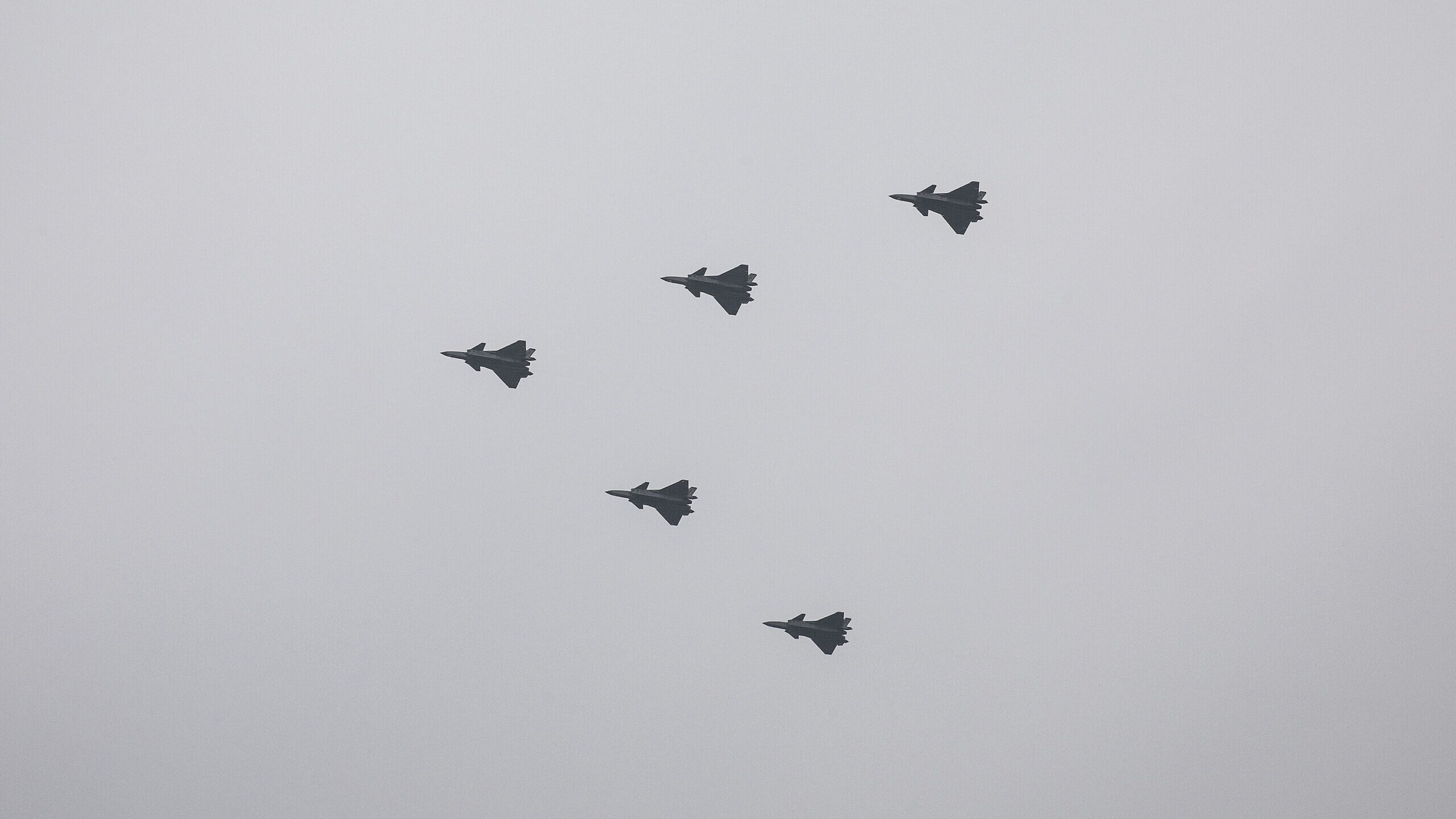
Aircraft from the Chinese People’s Liberation Army (PLA) air force fly in formation during a parade to celebrate the the 100th founding anniversary of the Chinese Communist Party on July 1, 2021 in Beijing, China. (Getty Images)
WASHINGTON: A senior US Air Force officer today called on the Chinese navy and air force to resume dialogues with its US counterparts in hopes of reducing the risk of miscalculation that leads to war.
The US and China have periodically held biannual meetings between air force and navy officials known as the Military Maritime Consultative Agreement (MMCA) Working Group, aimed at reducing safety risks and preventing conflict.
However, those opportunities have “dried up” over the past couple years, and it will be up to the Chinese People’s Liberation Army to reignite talks, said Air Force Lt. Gen. Kevin Schneider during a Stimson Center event.
“I put this on the PLA to pick this up where they have dropped off and re-enter these dialogues so that we do have that conduit of information, the ways to share and an opportunity to de-escalate or to prevent an incident from turning into a conflict or some sort of a shooting war,” said Schneider, who recently returned to the Pentagon after a two-year stint as commander of US forces in Japan.
The MMCA working group last met in May 2020, according to the Pentagon’s annual China report released earlier this week. China has failed to show up for further MMCA meetings, most recently declining to attend a MMCA Working Group and Plenary meeting scheduled for December 2020. (The Chinese government maintained that the meeting did not occur because a mutually-agreed upon agenda was never established, according to the South China Morning Post.)
Schneider said the standing dialogues, which occurred at the general and flag officer levels, provided a forum for US and PLA air force officials to discuss unprofessional behavior and unsafe intercepts.
“You may not find [those discussions] completely satisfactory, or mutual understanding may not have been achieved,” he said, But “at least there was a dialogue, and at least there was that connective tissue and conduit of information, and at times we did see changes made in terms of tactics, techniques and procedures.”
That fewer forums exist for that communication “should cause us a little bit of concern,” he said.
“Despite the frictions that we have in diplomatic or political levels, one of the things I think that has … ensured stability in times of crisis is the mil-to-mil dialogues that happened throughout the world,” he said. “That is something I think that both sides need to continue to work towards.”
Schneider’s comments come as the PLA air force ratchets up pressures in the Asia-Pacific region, having carried out hundreds of flights over Taiwan’s Air Defense Identification Zone since September.
Taiwan’s Ministry of National Defense has reported five such incursions since Sunday, involving a total of 18 Chinese warplanes. Most recently, on Friday morning, a PLA Y-8 multi-mission plane outfitted for antisubmarine warfare traversed into the southwestern portion of Taiwan’s ADIZ.
In an October interview, James Mulvenon, a Chinese military expert at SOS International LLC, speculated that increased Chinese flights into Taiwan’s ADIZ could serve multiple purposes, including: “intimidating Taiwan, wearing out Taiwan’s Air Force, sending a message to the US, training purposes, domestic PRC messaging, and setting higher new ‘normals’ for PRC air activity.”
Most importantly, however, the flights impede US understanding of how China operates, which could “complicate future indications and warning of PRC military action,” he told Breaking Defense then.
The Defense Department highlighted the importance of keeping open communication channels with PLA officials in its annual China report, stating that the pace and scope of the PLA’s modernization makes it challenging for the US to understand Chinese intent.
Those difficulties were heightened in 2020 due to the COVID-19 pandemic, which made it more difficult for in-person meetings to occur.
“As the PLA develops and expands its reach globally, the risk of an accident or miscalculation also increases, putting a premium on risk reduction efforts and highlighting the need to ensure the safety of U.S. forces operating in close proximity,” the report said.
“This evolving condition has further emphasized the importance of establishing timely communications during a crisis, and to maintaining regular communication channels to prevent crisis and conduct post crisis assessments,” the report said.
Schneider is not the only Air Force official clamoring for greater transparency with Chinese officials.
In August, Maj. Gen. Michael Lutton — commander of the 20th Air Force, which is responsible for the US intercontinental ballistic missile inventory — made the case for US-Chinese talks on nuclear weapons, which he believes could provide greater stability between the two great powers.
However, he added, “I think the challenge is going to be on the Chinese side.”






















